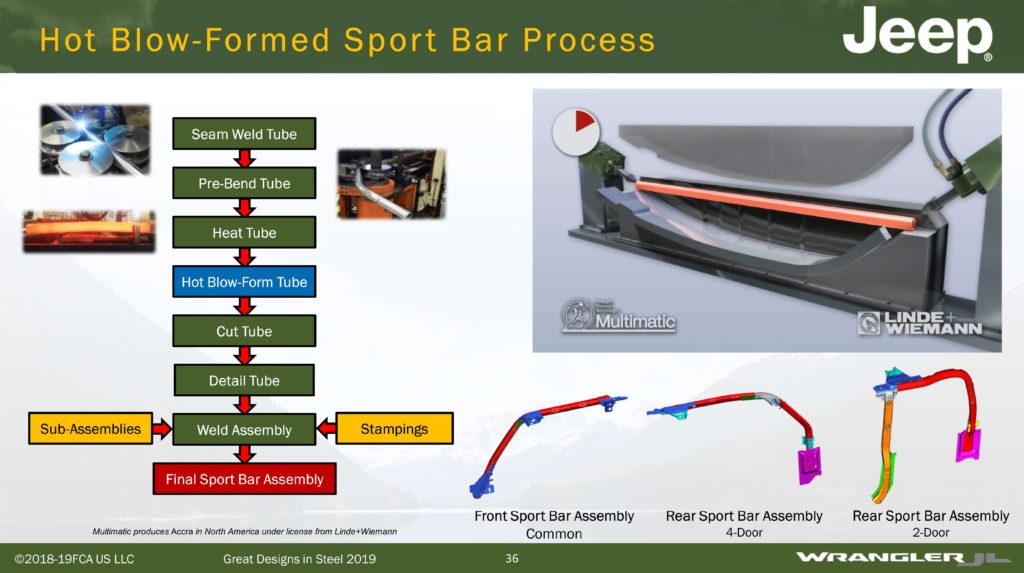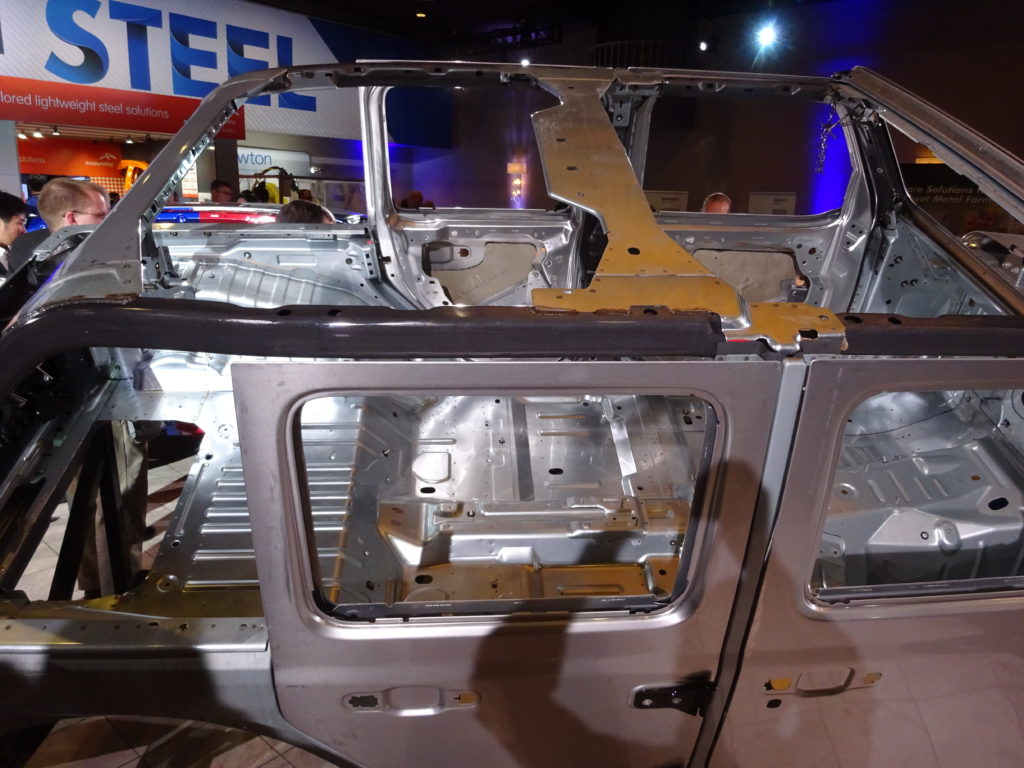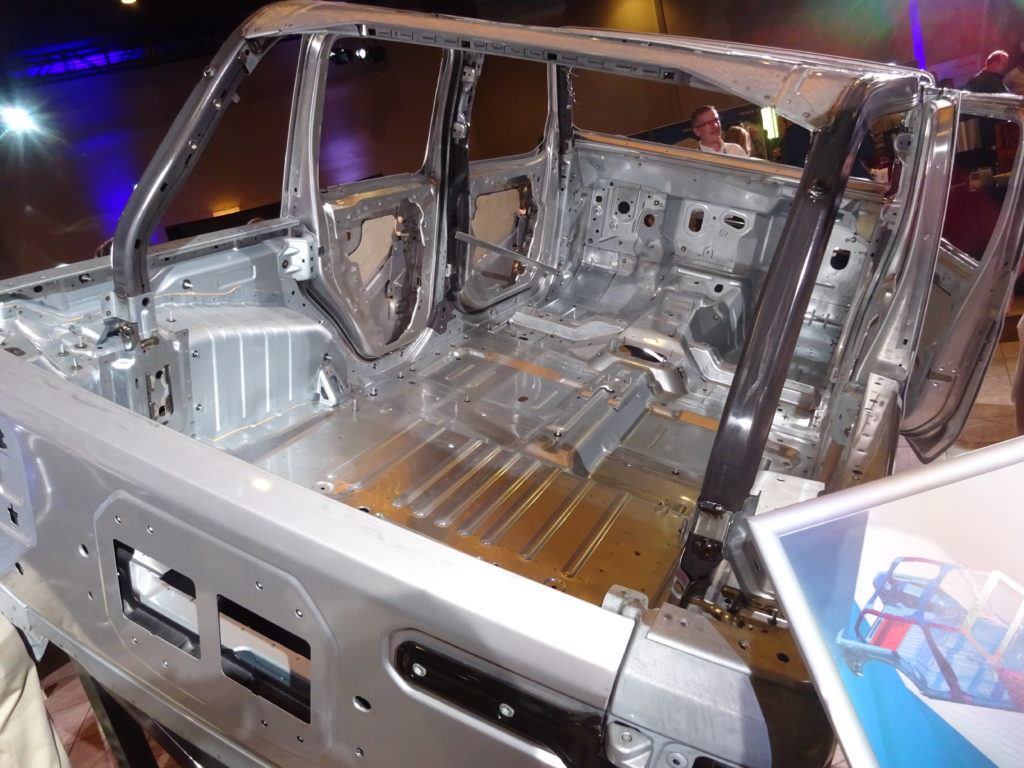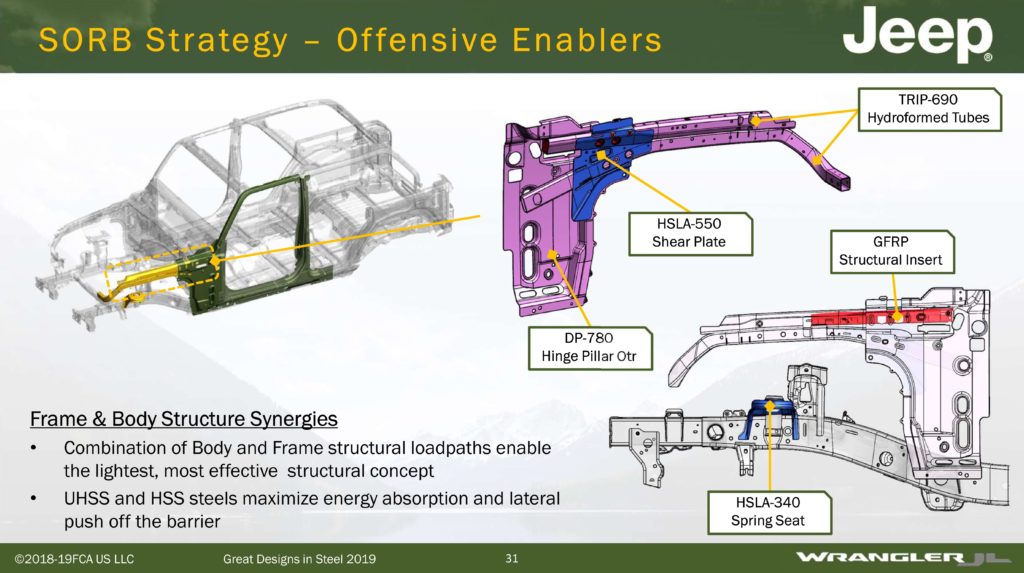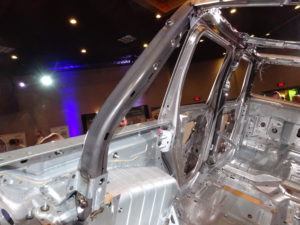
Next-gen Jeep Wrangler has ‘Blow-Formed’ ultra-high-strength steel sport bars
By onEducation | Market Trends | Repair Operations | Technology
The new generation of the Jeep Wrangler on sale now has what FCA calls “Hot Blow-Formed” sport bars running from the start of the A-pillar back to the end of the C-pillar.
April Bagley of FCA body systems and components engineering explained the technology of the structures last month during the 2019 Great Designs in Steel. The new generation of the Wrangler started with the 2018 model year, so repairers are probably already seeing them.
According to Bagley’s presentation, the sport bars are part of the 14.4 percent of the vehicle made up of hot-stamped ultra-high-strength steel.
FCA’s free OEM repair procedures indicate they’re actually two unsectionable, 1,300-megapascal structures connected at the B-pillar. (Note: You need to check the paid FCA procedures to do an actual repair. It’s also unclear if the free FCA PDFs are updated consistently to reflect the content on the paid site.)
Bagley said the tubes were formed by injecting hot air into steel within a die, blowing up the steel to the shape of the die. An injection of water then quenches the structure into the tough, light structure you receive.
The technique also allows for complex sections and dimensions, reducing residual stresses and tighter tolerances, she said, calling the latter importnat for an upper body. It also removed six bolted joints worth 26 bolts from the process, she said.
FCA sought to use the 2018 Wrangler’s sport bars to meet roof crush requirements for the first time, Bagley said. “It was a challenge,” she said.
The front sport bar remains constant. The rear sport bar’s shape differs between the two- and four-door Wrangler.
“The sport bar is our upper body,” Bagley said. “It needed to be dimensionally stable and structurally sound.”
According to the Jeep repair procedures, part or all of the B-pillar (the entire structure on the two-door and the outer on the four-door) and hinge pillar reinforcement are also 1,300 MPa. These are not permitted to be sectioned as well. The B-pillar inner on the four-door Wrangler is 690 MPa and can’t be sectioned either, in case you were curious.
It’s unclear from Bagley’s presentation if the B-pillar on the two-door Wrangler variant is blow-formed.
“Due to the usage of the type of metal in conjunction with the tensile strength involved on the inner components and reinforcements sectioning of these parts are not allowed,” FCA writes of all these parts in its free repair procedures. “Complete replacement of the component or reinforcement is the only acceptable repair.
“It will be necessary to use a Tungsten Carbide Drill Bit to release the spot welds along the areas where these parts join other components.” (Emphasis FCA’s.)
Bagley also said the blow-formed sport bars play a role in the Wrangler’s small-overlap crash protection too. The IIHS test involves ramming the driver- and passenger-side quarters of the front end into a 5-foot-tall barrier at 40 mph, simulating smacking into a tree.
Bagley called that test a “new feature for us,” possibly a reference to the prior-generation Wrangler debuting in the 2007 model year, five years before the IIHS test’s introduction. (The old Wrangler did pretty well, considering: The two-door version gets a “marginal” but the four-door Wranger gets a “good.“)
“We have an offensive structure and a defensive structure,” Bagley said.
The offensive structure is a combination of body and frame structural load paths which absorb energy and push the Wrangler off the barrier, according to Bagley. Her presentation depicted an HSLA-550 shear plate, a DP-780 hinge pillar outer and TRIP-690 hydroformed tubes containing a fiberglass-reinforced composite insert. An HSLA-340 spring seat appears on the frame rail, according to the presentation.
Defensive structures like the sport bars and other hot-stamped reinforcements and high-strength steel loadpaths provide a safety cage and prevent intrusion into the passenger cabin, according to Bagley.
Her presentation also indicated an “Upgraded Sill section for higher strength” and mentioned “State-of-the-art detailed simulation models used for spot weld and material rupture characterization.”
For side-impacts, FCA used the “same strategy,” Bagley said.
High-strength steel underbody cross members, the sport bar, and the hot-stamped B-pillar all play a role, according to Bagley. She also pointed out that the B-pillar had a lower-strength transition and soft-zone to manage the energy. (Likely another reason why you shouldn’t section it.)
Roof crush strategies also included a high-strength steel front header and roof bows to transfer energy across the vehicle, according to the presentation.
More information:
Free FCA Mopar Repair Connection site
Paid FCA Mopar Tech Authority OEM repair procedures site
2018 Jeep Wrangler presentation
FCA, May 15, 2019
Images:
The “Blow-Formed” ultra-high-strength steel bars between the A- and B-pillar and B- and C-pillar are shown on the 2018 Jeep Wrangler at Great Designs in Steel 2019. (John Huetter/Repairer Driven News)
Structures used in small-overlap crash protection on the 2018 Jeep Wrangler are shown. (Provided by Jeep via Great Designs in Steel)

